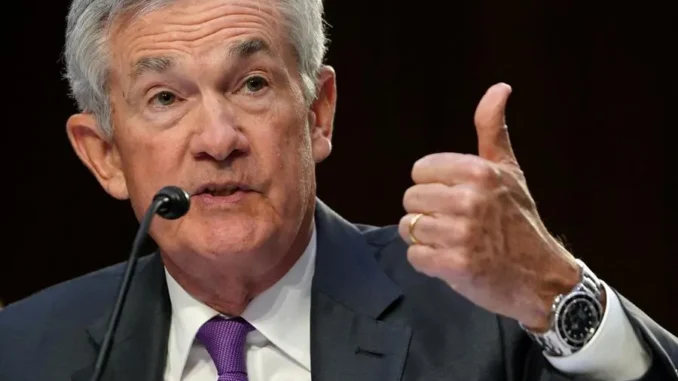
March 8 (Reuters) – Federal Reserve Chair Jerome Powell on Tuesday foreshadowed key elements of the central bank’s upcoming rate-setting meeting: A half-point increase is on the table and updated policymaker forecasts are likely to feature a high point for rates above the 5.1% in their last projections in December.
Economic data released since the Fed’s last meeting, held Jan. 31-Feb. 1, has surprised consistently to the upside, suggesting the 4.5 percentage points of rate hikes since March 2022 have yet to sufficiently slow the economy to beat back inflation.
“Nothing about the data suggests to me that we’ve tightened too much – indeed, it suggests that we still have work to do,” Powell said. “It’s hard to make a case that we’ve over-tightened. It means we need to continue to tighten.”
Just how high and how fast Powell and his colleagues are willing to go will hinge on a clutch of key reports between now and the rate-setting Federal Open Market Committee’s March 21-22 meeting, starting with employment data due this week.
Shorter-dated yields soared, with the rate on the two-year note closing at a new high since mid-2007 at 5.015%. Yields on the 10-year Treasury notes , meanwhile, fell 1.5 basis points to 3.968%.
Here is a quick primer on what an inverted yield curve means, how it has predicted recession, and what it might be signaling now.
WHAT SHOULD THE CURVE LOOK LIKE?
The yield curve, which plots the return on all Treasury securities, typically slopes upward as the payout increases with the duration. Yields move inversely to prices.
A steepening curve typically signals expectations for stronger economic activity, higher inflation, and higher interest rates. A flattening curve can mean investors expect near-term rate hikes and are pessimistic about economic growth further ahead.
HOW DOES THE CURVE LOOK NOW?
Investors watch parts of the yield curve as recession indicators, primarily the spread between three-month Treasury bills and 10-year notes , and the two- to 10-year (2/10) segment .
Yields on two-year Treasuries have been above those of 10-year Treasuries since July.
That inversion reached negative 103.1 basis points on Tuesday as shorter term yields soared, the largest gap between shorter-dated and longer-term yields since September 1981. At that time, the economy was in the early months of a recession that would last until November 1982, becoming what was then the worst economic decline since the Great Depression.
“It’s not unusual to get a yield curve inversion but it is unusual to get one of this magnitude. We haven’t seen one like this in quite a while,” said Brian Jacobsen, senior investment strategist at Allspring Global Investments.
Deeper inversions do not necessarily mean deeper or longer recessions, Jacobsen said.
The curve plotting yields of three-month bills against those of 10-year notes, which had already inverted in intraday trading in July, turned negative in late October, closing inverted for the first time since early 2020.
WHAT DOES AN INVERTED CURVE MEAN?
The inversions suggest that while investors expect higher short-term rates, they may be growing nervous about the Fed’s ability to control inflation without significantly hurting growth. The Fed has already raised rates by 450 basis points over the last year.
The 2/10 year yield curve has inverted six to 24 months before each recession since 1955, according to a 2018 report by researchers at the San Francisco Fed. It offered a false signal just once in that time. That research focused on the part of the curve between one- and 10-year yields.
Anu Gaggar, global investment strategist for Commonwealth Financial Network, found that the 2/10 spread has inverted 28 times since 1900. In 22 of these instances, a recession followed, she said in June.
For the last six recessions, a recession on average began six to 36 months after the curve inverted, she said.
Before this year, the last time the 2/10 part of the curve inverted was in 2019. The following year, the United States entered a recession, albeit one caused by the pandemic.
WHAT DOES THIS MEAN FOR THE REAL WORLD?
When short-term rates increase, U.S. banks raise benchmark rates for a wide range of consumer and commercial loans, including small business loans and credit cards, making borrowing more costly for consumers. Mortgage rates also rise.
When the yield curve steepens, banks can borrow at lower rates and lend at higher rates. When the curve is flatter their margins are squeezed, which may deter lending.



